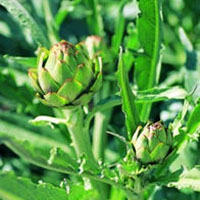Gluten Free
What does following a gluten-free diet mean? That you're embarking on an easy diet with a wide range of health-promoting effects. Instead of dwelling on what you’re giving up, consider that you’re going to enjoy a whole new world of delicious food options to meet your special dietary needs. You’ll be eating seasonally, choosing more fresh fruits and vegetables, focusing on meats, seafood, poultry, legumes, lentils, corn, and rice, and discovering fascinating ancient grains such as quinoa, amaranth, and millet. You’ll be able to eat potatoes, eggs, most cheeses, even chocolate (!)—and enjoy them without guilt because you’ll be taking good care of your body. In fact, you’ll probably end up eating—and feeling—better than ever!
Visit this page for more information about living Gluten Free
---
We carry a large variety of gluten free items, the brands listed below represent just some of the offerings we carry















More Diets
Artichoke

Best to Buy
Artichokes are available all year long, and peak from March through May.
Prep & Store
Wash artichokes just before cooking. Cut off the tips of spikier outside leaves.
Quick & Easy Recipe
Immerse clean, whole artichokes in a large pan of cold water and 1 tablespoon (15 ml) of olive oil. Cover and bring to boil, simmering for 25 to 30 minutes. To eat, simply pull off leaves, dip in lemon butter, vinaigrette, or sauce, and scrape the pulp with teeth. Discard remainder of leaf.
Nutrition Notes
Artichokes are an excellent source of vitamin C and folic acid, and a good source of magnesium and potassium.
Copyright © 2025 TraceGains, Inc. All rights reserved.
Learn more about TraceGains, the company.
The information presented in the Food Guide is for informational purposes only and was created by a team of US–registered dietitians and food experts. Consult your doctor, practitioner, and/or pharmacist for any health problem and before using any supplements, making dietary changes, or before making any changes in prescribed medications. Information expires December 2025.











